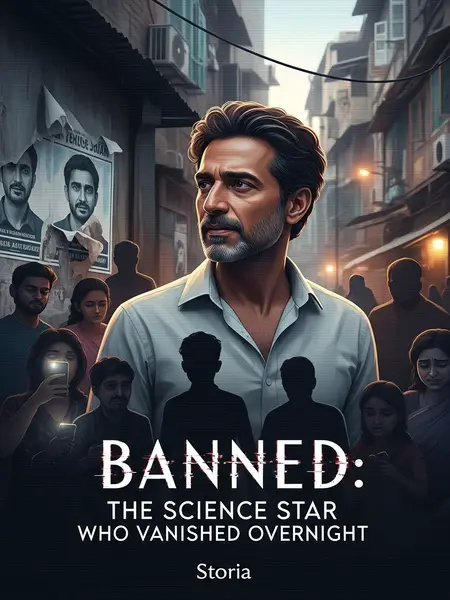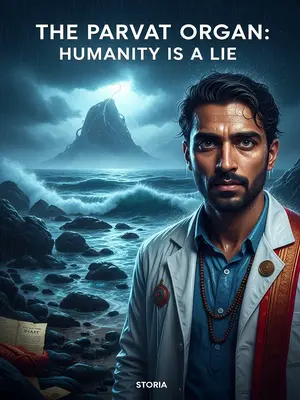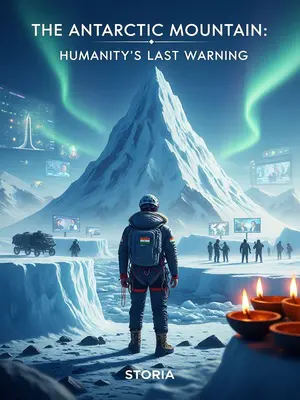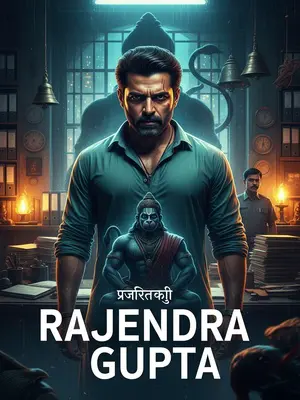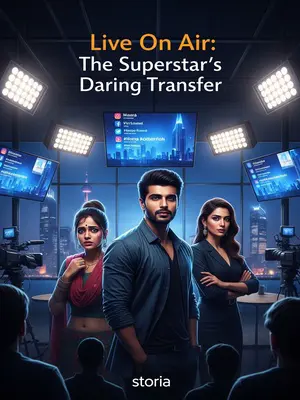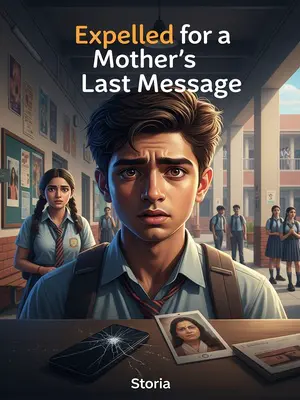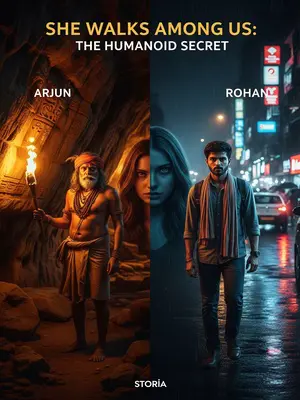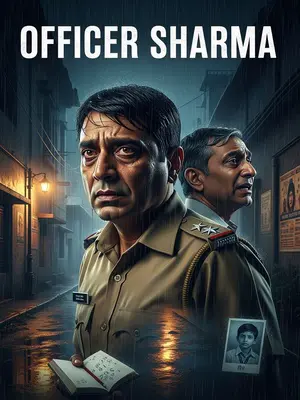Chapter 1: The Disappearance
In a small town kitchen, an aunty paused mid-roti, her son’s phone screen frozen on a spinning loading circle. Jigyasa Junction’s latest video wouldn’t play. Something was wrong.
Even in the narrowest lanes, aunties had heard of him—sometimes catching his videos on their children’s mobiles while kneading atta. His reach rivaled only cricket and Bollywood, the real Indian superpowers.
Headlines blared his name. Government agencies sought his wisdom. His face graced the covers of tech magazines; he sat on NDTV, breaking down science in clear Hindi. Local tuition teachers referenced his clips. At every science fair, his name popped up—he was the new Abdul Kalam, but for a digital Bharat.
But just when it felt like his star could rise no higher, he vanished.
It was like a cricket final interrupted in the last over. People felt cheated—like someone had switched off the main Diwali light in the middle of the festival.
Rumours spread, as they do in India, faster than the monsoon. Some whispered he’d become a mouthpiece for outsiders.
WhatsApp groups, chai stalls, and every other Facebook comment thread buzzed: Had he crossed a government red line? Was there foreign funding behind those oh-so-slick animations?
14 July 2021—a date seared into the hearts of science lovers. The day hope felt heavy in the air, even as the ceiling fan spun lazily. On this humid Wednesday, the renowned science populariser "Jigyasa Junction" was abruptly banned across the entire internet.
No official notice, just silence. Channels gone. Twitter and WhatsApp forwards exploded. Friends pinged each other: “Bhai, Jigyasa Junction ka channel gaya kya? It’s not loading!”
The news hit like a stone in a calm pond, rippling shock everywhere.
The silence was almost physical. Science teachers, schoolchildren, and young office-goers who’d grown up watching Jigyasa’s videos felt the loss like someone had shut down their favourite paani puri stall overnight.
Fans were stunned, unable to believe their eyes. The air felt thick, as if even the monsoon couldn’t wash away the confusion.
Some clung to hope—it must be a glitch! Others refreshed browsers, pinged friends, checked YouTube India’s Twitter. But nothing. Everything had vanished, like the last piece of mithai at a family function.
"Jigyasa Junction" called itself the "encyclopaedia of contemporary life."
It was the place to decode everything from why kites fly during Makar Sankranti to why trains are late every monsoon. It made sense of chaos, the way only a truly Indian science teacher could.
Over three years, they crafted nearly 200 sharp, short science videos.
Ask any teenager prepping for NEET or JEE—two or three Jigyasa Junction videos would be bookmarked for last-minute revision. Uncles and aunties proudly shared them in family WhatsApp groups, thrilled to be ‘in the know’.
Titles ranged from "How to Be a Sensible Streetlight" and "How to Dispatch Trains for 1.3 Billion People" to "Atomic Bomb Manufacturing Guide" and "Why Is Counterfeiting Currency So Difficult." The topics swung from everyday mysteries to the audaciously ambitious. The joke went: if Jigyasa Junction explained it, even your dadi would get it.
In just minutes, they turned obscure knowledge into everyday understanding.
Their style? Like your favourite science teacher—stories, analogies, and a dash of desi humour. No jargon, only clarity. And always leaving you wanting more.
The animation, the storyboarding, the explanations—simply irresistible.
Animated characters in kurtas, bindis, and moustaches argued over samosas in the background—each frame bursting with Delhi street vibes. Hinglish flowed freely. Even the background music was unmistakably Indian: tabla, flute, or a cheeky Bollywood riff.
Serious science, yes, but never dull.
Kids laughed at hidden jokes in the animations. Even the driest CBSE chapters came alive after a dose of Jigyasa Junction.
2020 was their zenith.
That year, the pandemic raged. Anxiety sat heavy in every home. Families stayed glued to their screens. Parents worried, kids bored, news channels blaring grim updates. Any clarity was gold.
At this crucial moment, "Jigyasa Junction" stepped forward.
Nobody could break down science for the aam aadmi like them. While fake news and panic swept social media, their videos were a breath of fresh air.
They released a video: "All About COVID-19."
The thumbnail? A cartoon virus with a worried face, a scientist in a white coat folding hands in namaste. It popped out amid all the doom.
For many families, Jigyasa Junction’s COVID video was the only thing that made sense amid the chaos.
Mothers in small towns watched it before sending children to the market. Doctors shared it in hospital WhatsApp groups. RWAs circulated it with their morning updates.
From the virus’s origins to transmission, prevention to treatment—every answer was covered, desi style: “Mask pehno, haath dholo, aur yeh dekho—social distancing ka asli matlab!” They tackled chai-stall questions too: “Is kadha really useful? What about steam inhalation?”
This single video? Over 100 million views.
It became India’s gold standard for COVID explainers. Even science-hating kids watched it twice. The video’s catchphrases turned into memes across Instagram and Facebook.
Millions more followed Jigyasa Junction. YouTube India named them among the "Top 100 Creators."
Bollywood stars retweeted it. Suddenly, everyone wanted a piece of Jigyasa Junction—TV anchors, state officials, even local netas.
Rohan Sharma, founder of Jigyasa Junction, landed on the Forbes 30 Under 30 list.
At home, his mother lit a diya before the family altar and sent a silent prayer of thanks. His father forwarded the Forbes news to every WhatsApp group he was in: "Dekho, apna ladka Forbes pe aaya hai!"
NDTV aired a special, full of glowing praise.
Anchors lauded his work. Social media buzzed with clips—finally, science was cool for Indian youth.
Government agencies lined up to collaborate.
Health ministry officials sent emails. State governments wanted custom videos in Bengali, Tamil, Marathi. Suddenly, Jigyasa Junction was everywhere.
Rohan stood at the very top, basking in glory.
He was the pride of every family WhatsApp group, the go-to name for journalists covering ed-tech, a role model for a new generation of science communicators.
The company grew—over a hundred employees, each a specialist. In the pantry, Parle-G and chai were always stocked, and someone had a cricket match quietly streaming on their phone. Even the office chaiwala would joke, “Sir, agle hafte toh aap logon ka interview TV pe bhi aayega kya?” The air buzzed with the thrill of building something big.
Beyond videos, Jigyasa Junction launched interactive learning kits like "Drying Factory" and "Basic Operations."
Kids across India unboxed motors and pulleys. Schools bought in bulk, teachers used them for demos. It was the kind of impact startups dream of.
A knowledge empire seemed within reach.
Tech investors circled. Plans for regional expansion—Bengali, Tamil, Marathi—were in the air. The future looked dazzling.
During chai breaks, employees joked, “Boss, agle saal toh IPO bhi kar lenge!”
But no one noticed the edge of the cliff beneath their dancing feet.
There were hints: online controversies, Twitter debates, a low murmur of criticism. But in the moment, everyone was too busy celebrating to spot the storm brewing.
Just when Rohan Sharma seemed unstoppable, disaster struck.
Like a sudden power cut during a cricket final, everything went dark. Disbelief. Anger. Confusion.
Jigyasa Junction vanished—no warning, no explanation.
The YouTube channel, Instagram, even the website—gone, like someone wiped the slate clean overnight.
He was banned.
Nobody knew the whole story. The shock was universal. It felt as if a beloved teacher had been escorted out of class mid-lesson.
And it all started with a war of words.
That night, as the city’s lights flickered and WhatsApp groups buzzed with theories, one thing was clear—India’s favourite science teacher had disappeared, and nobody knew why.
